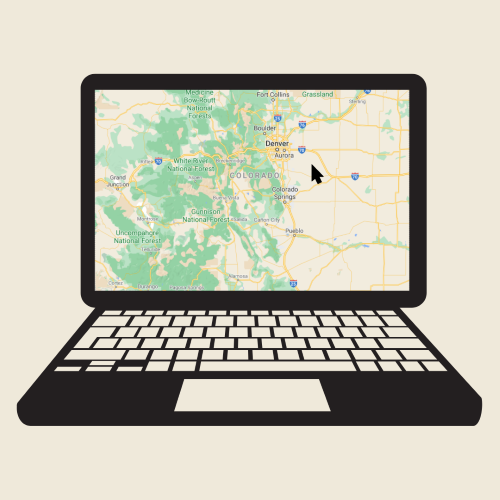Redistricting Online Portal
Welcome to Colorado Redistricting Online!
This online tool assists the Colorado Independent Redistricting Commissions and the public in drawing congressional and state legislative district maps following the 2020 U.S. Census. The foundation of Colorado Redistricting Online is Esri’s ArcGIS software platform, a well-known and proven mapping tool. This software gives mapmakers features and functionality for plan management, visualization, editing, and community collaboration.
You are the community in community collaboration, and we need your input. The commissions and staff will use Colorado Redistricting Online to draw maps, also known as redistricting plans, but Colorado citizens may also use this software tool to create, share, and comment on redistricting maps. You will have access to all of the same data the commissions use to make plans, including U.S. Census population, geographic and political boundaries, and much more. We hope you will be involved in the process.
Viewing Submitted Maps
The Colorado Redistricting Gallery allows you to view maps submitted to the commissions.
Viewing Submitted Maps
The Colorado Redistricting Gallery allows you to view maps submitted to the commissions.
Creating an Account
To log in to Esri Redistricting Online, you must have an account even if you only want to view plans:
- Click the link below to launch the Redistricting Online tool.
- Select “Create an Account” and enter your profile information.
When you log in to Esri Redistricting Online, the Learn tab is enabled. Here you can learn about the application and the process for creating districts.
Click the link below to access the Redistricting Online tool:
Redistricting Online
If you need assistance logging in to the Esri Redistricting Online tool or if you have any questions, please contact: ITcolorado.redistricting2020@state.co.us
Redistricting Online
If you need assistance logging in to the Esri Redistricting Online tool or if you have any questions, please contact: ITcolorado.redistricting2020@state.co.us
Colorado Independent Redistricting Commissions Staff Preliminary Data Disclaimer
The sudden worldwide pandemic of the Coronavirus Disease 2019 (COVID-19) in 2020 resulted in an unprecedented and significant disruption in the conduct of the federal 2020 decennial census. The U.S. Census Bureau was originally scheduled to release the redistricting data to the states by April 1, 2021, but due to the delays caused by the pandemic, the Census Bureau has announced they plan to release the redistricting data in a “legacy format” by August 16, 2021 and an equivalent “user-friendly format” by September 30, 2021.
Both the Congressional and Legislative commissions have found that waiting until mid-August for the earliest set of census data to begin creating the preliminary redistricting plans will likely result in the commissions missing their constitutional deadlines. As a result, both commissions decided to move forward with a “preliminary” dataset using third party sources in order to create the nonpartisan “preliminary plans” required under the Colorado Constitution. The commissions believe that this preliminary dataset is sufficient to create the preliminary plans required by the Colorado Constitution. The commissions are releasing this dataset only for the purpose of disclosing how the preliminary plans were created. The commissions do not anticipate using this dataset for any other purpose.
While the Colorado Independent Redistricting Commissions Staff made every effort to produce and publish the most accurate information possible, data should be read as indicative of magnitude rather than exact figures. No warranties, expressed or implied, are provided for the data herein. Although the data found here has been produced and processed from third party sources believed to be reliable, no warranty expressed or implied is made regarding accuracy, adequacy, completeness, legality, reliability or usefulness of any information. This disclaimer applies to both isolated and aggregate uses of the information.
Preliminary Plan Geographic Boundaries
The 2020 preliminary redistricting plans are based on the 2010 Census geographic boundaries. While the 2010 geospatial geometries will not exactly align with the 2020 geometries in the final data, it was determined that the effort to convert from one geographic boundary to another would take more time and will likely have a marginal benefit on the quality of the preliminary maps. In addition, the preliminary population estimates and the 2010 block level geospatial data could be assembled into files that conform to the suitable format for loading into Esri’s ArcGIS software platform.
